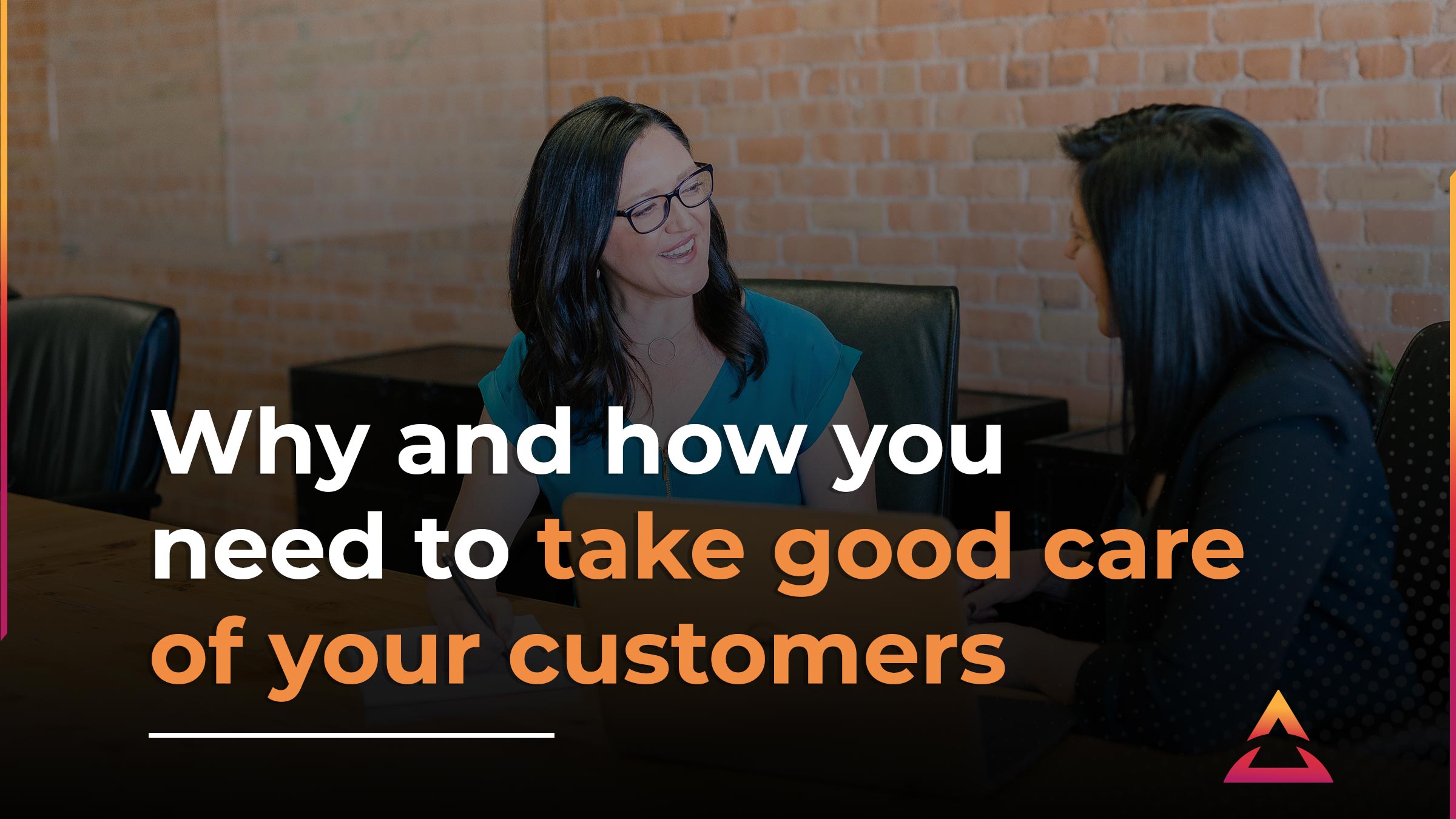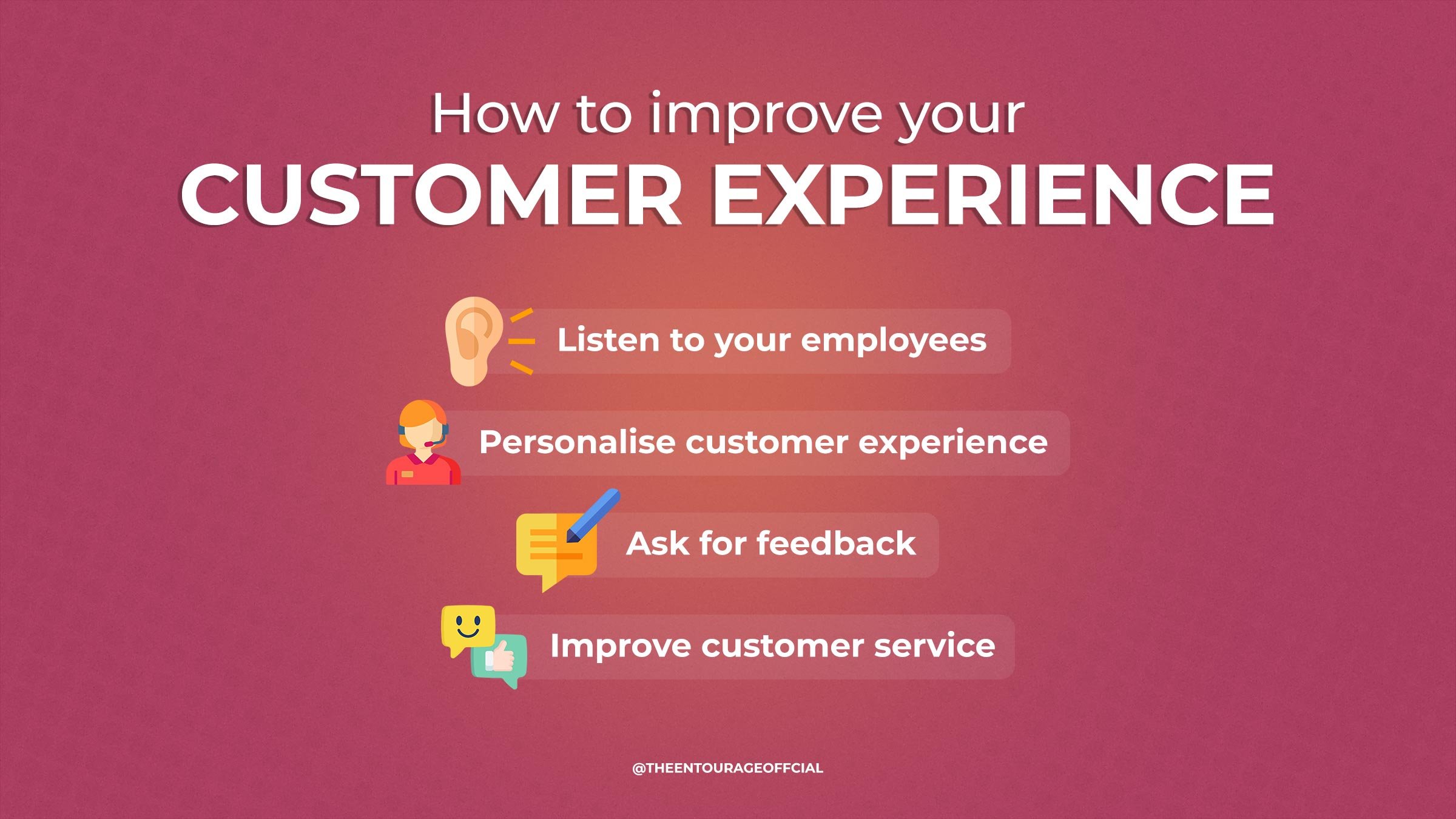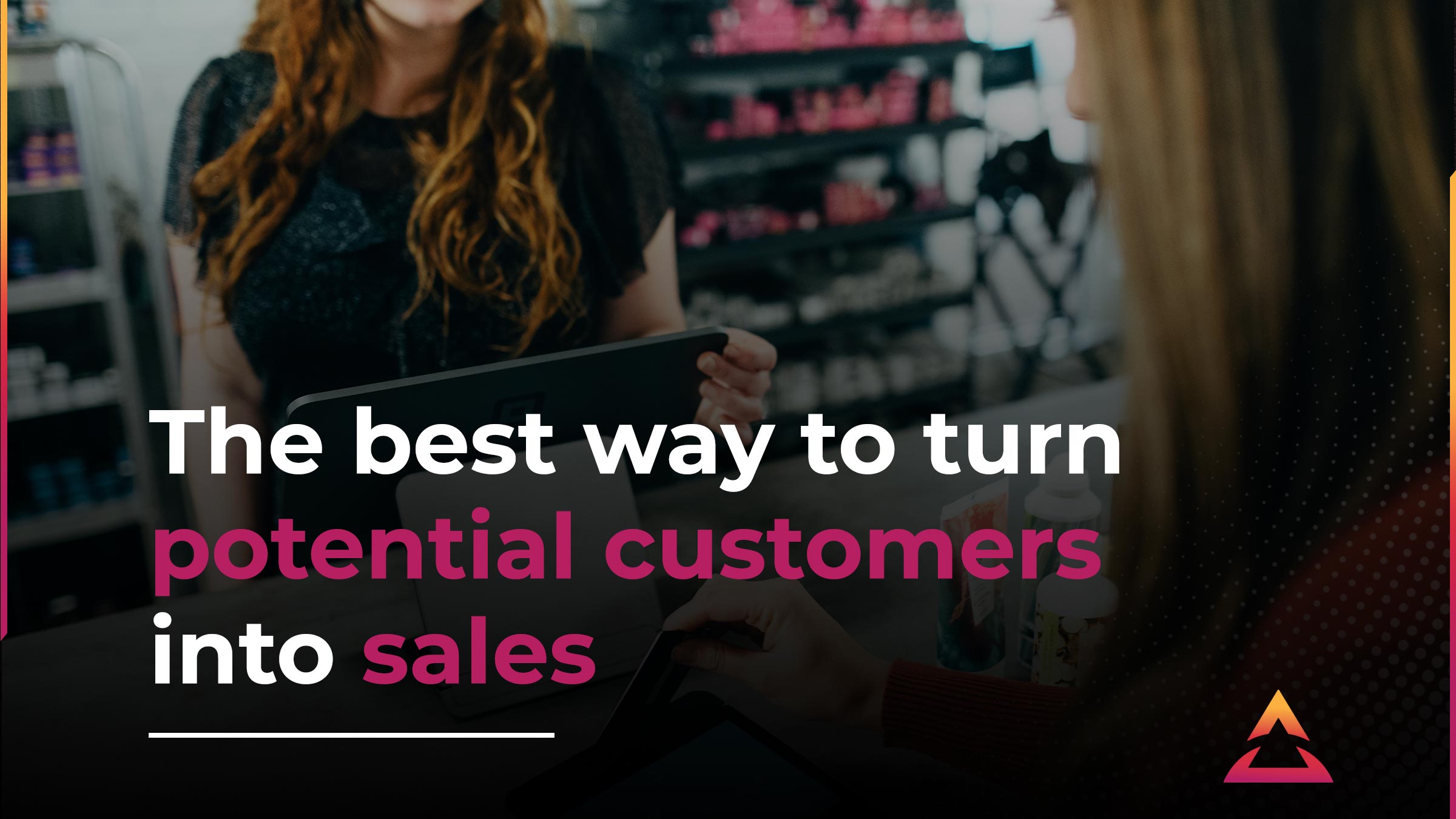What Is Customer Experience & Why Should You Focus On It?

We are all customers. We all use a product or service, and we’ve all had a customer experience. Some of these experiences have been good, others not so much. How each and every customer experience has been managed has been imprinted upon us and has influenced us to stay as a customer or leave and use their competition instead.
As business owners, you want to ensure every customer has a positive experience. Even if something goes wrong, how you resolve that issue can say a lot about your company and how it cares for its customers.
Let our training team here at The Entourage help you explore what good customer experience is and how you can create a winning customer experience marketing strategy through our marketing training and knowledge.
So what is customer experience?
Customer Experience (CX) is everything that a person wanting or using your products and services goes through and their feelings surrounding them. How frustrating was it for the customer to find your contact details? How fulfilling was the experience in making that purchase? While the CX can include any technical issues, it is generally based more on the emotions and the feelings customers have.
What is good customer experience?
A good customer experience is one where the customer is left smiling, satisfied or complete. Even when something goes wrong, you can still leave a customer with a good experience.
How can you provide good customer experience?
- Know your products and services - If a customer needs help, the more you know, the more you can help them right away. You present as someone with knowledge.
- Be a problem solver - Many people are looking to solve a problem when they go shopping. Help these people solve a problem, and you’ll be front of mind. Don’t sell, solve.
- Be positive - All problems can have a solution. Being happy and helpful can soothe the irritation customers might have when they have a problem. This attitude works well with customer complaints as well.
- Listen - This might sound strange, but if you tell a customer what they want or need, that won't help. If you listen to them first, investigate their story, their problem, then you can give personalised help and solve their problem in a way that shows you care.
- Engage through social media - One effective way to enhance customer experience is by using social media platforms. By creating targeted content, you can reach customers with Instagram ads that resonate with their interests, leading to a more personalized and engaging interaction. This not only fosters a sense of community but also allows you to respond quickly to customer feedback and inquiries.
What is poor customer experience?
We could almost say that poor customer service is the opposite of the above, but there is more to it than that. What can give customers a bad experience with you?
- Not taking responsibility - If something goes wrong between you and your customer, and it isn’t directly your fault, don’t shy away from it. Did something get lost in the mail? Send a new item, or refund the customer. Keep the goodwill.
- Inflexibility - How do you deliver your products and services? How do you take payment? Can you adapt if a customer wants what you have but needs it differently? Can you arrange a payment plan? Can you delay delivery until a second date?
- Delaying a response - If a customer needs help or wants to voice a complaint, not responding shows that you don’t care. Whether it's through email, your social media, or Google reviews, even if you can’t answer the query straight away, responding to let them know you’re looking into it helps. Plus, regular updates are helpful too.
We can hear some of you saying - but what about customers who repeatedly complain? We recommend keeping a file, and if a similar situation occurs, address them directly.
Why is customer experience so important?
1. Improves customer retention and loyalty
If a customer has a positive experience with you, they will most likely return to you when the need arises or continue to use your products or services going forward. This way of building customer retention is how you develop brand advocates. As this Customer Retention article shows you, it costs less to keep a customer than it does to try and find new customers.
People can rely on you for a great experience, and if something happens to dampen that experience, loyal customers are more likely to give you a chance to make amends rather than change brands or providers.
2. Customers are more likely to recommend your products
Not only is it important to retain existing and new customers and continue turning them into brand advocates down the line, having them share their experience with you is the best kind of referral.
Referrals, or word of mouth, are one of the most powerful marketing channels. We trust our friends, and if one of our friends tells us what a bad time they had with a particular business, we won’t go there. Similarly, if our friends had a great experience, even through adversity, they’ll share that good news.
People remember how you made them feel. If you make someone feel happy, or you make them laugh, they are more likely to remember the experience and then share that experience with others.
Give your customers a positive experience, have them leave with good memories, and they will want others to have those memories too. Word will spread, and customers will come to you after hearing these good stories.
3. Improved customer feedback and employee experience
Giving a customer a positive experience leads to good customer feedback, especially if you encourage it. For online orders, why not have a link for a quick NPS survey software once they’ve checked out their shopping cart?
The great thing about receiving positive feedback is it not only reinforces the good work you're doing but also the work that your employees are doing as well. This tells you straight from your customer's mouth how you're tracking when it comes to your performance on the product or service delivery side.
Great customer experiences lead to positive feedback and leads to happy employees who know they've done a good job.
How to measure customer experience?
Measuring something as elusive as customer experience may seem impossible. How can you attribute a value to something that people could experience differently? A score from 1 - 10 for each person is a way you can do it, but as we said, different people experience the same thing differently.
You need to break down the customer journey and measure each part.
1. Start with the overall customer journey
What does the customer journey look like? What do you want the customer to leave with once their journey is complete? How effective is the process of moving the customer through your marketing funnel and sales funnel?
You can look at metrics such as how much money was invested into the customer journey in relation to the spend at the end. If you have a good CX, that can lead to a customer spending more money.
How many clicks to buy does it take for a customer to purchase an item? How many pages do they have to visit before making a business decision?
2. How many phases are there to the journey?
How many steps does a customer have to go through to complete their journey? Are there too many, and do they have fatigue? Or are there too few, and they don't understand the full scope of what is going on? Lost potential for bigger sales?
Sometimes having many steps in the journey is not a bad thing if the customers are enjoying that journey. They could be learning a lot, investing a lot, and feel very satisfied at the end.
3. Individual touchpoints
Look at each point the customer interacts with your company or your employees. Is it social media advertising? Are they reading blogs and articles? Do customers speak to your employees on the phone or come into the store? Are there any points on the journey which aren’t effective? Do customers drop off, do they leave negative feedback? Do customers miss touchpoints, implying they’re not actually needed?
You can streamline your customer journey to maintain that high your customers feel when they interact with you.
How to improve your customer experience?
Businesses should always be looking for ways to improve themselves, and improving your CX is no different. Here are some quick tips on how you can boost your CX.

- Start with your employees - If you can empower your employees to be responsible for their work, to have knowledge of the business, and can help clients as the first point of contact, you’d be surprised at how this can improve your CX. Customers will leave their interactions with your employees feeling satisfied that your business will be able to solve their problems. This will build trust and ensure customer retention.
- Listen - Listen to your employees. they might just have a better understanding of your customer's problems, wants, and needs through their higher interaction with your customers. And you can always learn and listen directly from your customers too who might have great ideas on how to work with you better
- Get as personal as you can - Knowing customers’ names, their regular orders, and birthdays is a great thing that you can utilise to improve their overall customer experience.
- Ask for feedback - Surveys after an interaction is a good way to get responses to questions you want but you could also communicate with them through text, email or in-person, whether that's asking for a review or just asking some questions directly from an employee or yourself.
- Improve and standardise your customer service - Have multiple channels of communication that you or your team look after that your customers can communicate with you on. Ensure that you and your team are trained to respond on all the different channels available in a timely manner and in line with your brand voice.
Digital customer experience - how is it different from normal customer experience?
In the digital world, customer experiences are just as important but is one of the biggest things many businesses neglect.
Ensuring that your customer's digital experience is optimised, fast, and easy to understand is vital.
And with over half of the world’s population using their mobile device for the internet and making purchases through their mobile device, ensure that you're thinking of mobile-first!
If you can’t cater to this digital realm, you will have bad CX and fail to retain them.
Conclusion
You want your customers to have a good experience with you. There are so many more positive things to be had from these experiences - customer retention, bigger spending, word-of-mouth advertising.
If you want to learn more about marketing and how to deliver positive customer experiences, check out more of our marketing training and resources that can help take you and your business to another level.
Related Posts
Join the movement.
Your Entourage journey starts here. Join Australia's largest community of over 500,000 business owners and entrepreneurs, and receive instant access to exclusive content and updates delivered straight to your inbox.




